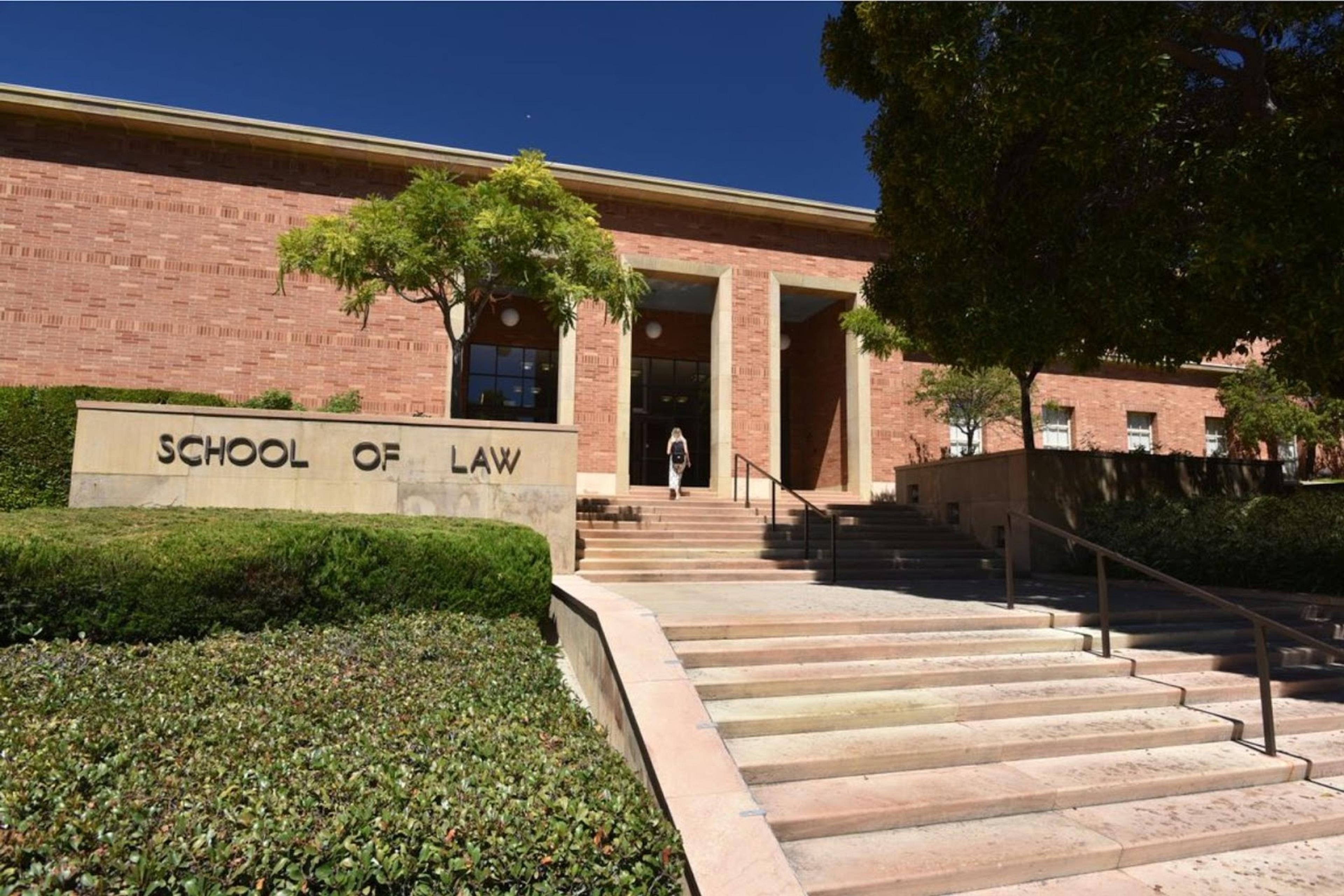What is URM for Law School? What to Know in 2025
Gain a comprehensive understanding of what URM is and its impact on law school admissions with our informative article.
Posted July 28, 2025

Join a free event
Learn from top coaches and industry experts in live, interactive sessions you can join for free.
Table of Contents
Understanding the concept of URM law school admissions is crucial for applicants navigating the increasingly competitive landscape. URM, or underrepresented minority, refers to individuals from racial and ethnic groups historically underrepresented in the legal profession. This status can significantly impact the law school admissions process, contributing to diversity and inclusion in legal education.
Defining URM and Its Role in Law School Admissions
The term underrepresented minority (URM) applies to groups such as African American, Latinx, Native American, and Pacific Islander individuals. Law schools recognize that these groups bring diverse perspectives to their classrooms, enrich discussions, and address the systemic lack of representation in the legal profession. Prospective applicants should carefully research and consult with resources to determine URM status as it applies to their background and the specific criteria used by their target law schools.
Admissions committees consider URM status as one factor among many in their admissions decisions. This is part of broader efforts to create a diverse student body reflective of the communities the legal field serves. However, URM status alone does not guarantee admission; it’s assessed alongside academic credentials, LSAT scores, and personal statements.
Which Groups Are Considered URMs in Law School Admissions?
The specific groups considered URMs can vary slightly between law schools and organizations. However, generally, URMs in law school admissions include:
- Black/African American - Individuals identifying as Black or African American.
- Hispanic/Latinx - Individuals identifying as Hispanic or Latinx.
- Native American/Alaska Native - Individuals identifying as Native American or Alaska Native.
- Native Hawaiian/Pacific Islander - Individuals identifying as Native Hawaiian or Pacific Islander.
It's important to note that some law schools may also consider other groups as URMs based on their specific demographics and goals for diversity.
The Variations in URM Classification Across Law Schools
The definition of URM can vary between law schools, with some institutions including groups like Middle Eastern or Southeast Asian applicants, while others do not. This variability highlights the importance for applicants to research each law school's specific criteria regarding URM status.
Applicants with mixed heritage or those who identify with multiple ethnic groups may find it beneficial to clearly articulate their background in their personal statements. Sharing how their experiences have shaped their perspectives can give admissions committees a more comprehensive understanding of their unique contributions to the law school's diverse community.
While URM status can provide an advantage, it does not compensate for deficiencies in other areas of an application. Strong academic records, solid letters of recommendation, and thorough LSAT preparation remain critical components of a competitive application. Applicants should aim to present a well-rounded application that reflects both their unique backgrounds and academic preparedness.
Why URM Status is Important for Law Schools
For law school applicants, diversity is not just a buzzword but a priority. Many schools aim to admit students from various backgrounds to foster a more inclusive environment. URM law school applicants often receive additional consideration because they contribute to the fulfillment of diversity goals.
Most law schools also recognize that URMs face systemic barriers, such as limited access to financial assistance, quality education, and networks for support. These barriers make the representation of URMs in legal education even more significant.
Challenges Faced by URM Applicants
Despite the advantages of URM status, applicants often encounter unique challenges during the law school application process:
Financial Barriers
The high costs associated with pursuing law school can be a major hurdle for URM applicants. Comprehensive LSAT prep courses, which are critical for competitive scores, can be prohibitively expensive for many. Additionally, the costs of applying to multiple law schools—including application fees, score reporting charges, and transcript processing—add up quickly. Even after securing admission, the financial demands of law school tuition and living expenses can deter applicants from pursuing their legal education.
To overcome these barriers, URM applicants can explore scholarships and grants specifically designed for under represented minority students. Free or discounted LSAT prep materials offered by organizations like Khan Academy, LSAC, and nonprofits can alleviate test preparation costs. Mentorship programs often provide financial guidance and fee waivers, while need-based financial aid and institutional scholarships can make law school more affordable.
Bias in Admissions
URM applicants may encounter challenges stemming from both conscious and unconscious biases during the admissions process. Admissions committees may unknowingly hold stereotypes or assumptions about URM applicants, which can affect how applications are evaluated. Furthermore, the overemphasis on metrics such as LSAT scores and GPAs often undervalues the unique experiences and perspectives that URM applicants bring to the table.
To counter these biases, applicants should craft compelling personal statements that highlight their unique backgrounds, resilience, and contributions to diversity. Strong recommendation letters emphasizing character, work ethic, and achievements can also help mitigate bias. Additionally, researching law schools with holistic admissions processes that prioritize diversity can increase the likelihood of being assessed fairly.
Underrepresentation in the Legal Field
The scarcity of URM role models and mentors in the legal profession can make it difficult for applicants to envision themselves succeeding in this career. Without established professional connections, URM applicants may struggle to find guidance or advocacy during the application process.
The lack of representation among attorneys and legal leaders can also contribute to feelings of isolation or self-doubt. However, joining organizations such as the National Black Law Students Association (NBLSA) or the Hispanic National Bar Association (HNBA) can provide mentorship and networking opportunities.
Many law schools also offer URM-focused initiatives, including affinity groups and pre-law programs, which help applicants feel supported. Attending open houses or networking events hosted by law schools is another way to connect with alumni and current students who can share insights and encouragement.
The Historical Context of URM in Law School Admissions
URM status has roots in affirmative action policies, which began during the civil rights movement to address racial inequities in education. Policies like these have faced legal scrutiny, such as in the 2003 Supreme Court case Grutter v. Bollinger, which upheld the use of race in admissions decisions but imposed limitations. Despite challenges, affirmative action remains a key tool for many schools striving to maintain a diverse student body.
The Role of URM Status in Achieving Diversity Goals
Top law schools often establish explicit diversity targets to admit a critical mass of URM students, recognizing that diversity enriches the educational experience and prepares future lawyers to serve diverse communities. However, achieving these goals requires more than just increasing enrollment numbers. Schools must take deliberate actions to foster an inclusive and supportive environment for all students.
- Recruit and retain diverse faculty who can serve as role models and mentors for URM students, offering perspectives that reflect their experiences.
- Create inclusive curricula that address systemic inequalities and legal issues tied to race, ethnicity, and underrepresentation in the legal field.
- Provide robust support systems such as career counseling, peer networks, and affinity groups to help URM students navigate law school and beyond.
- Develop scholarships and financial aid programs specifically targeted at URM applicants to reduce financial barriers to entry.
- Host diversity-focused events and workshops that encourage discussions on equity and inclusion in the legal profession.
- Foster partnerships with URM-focused organizations such as the National Black Law Students Association (NBLSA) to offer mentorship, networking, and leadership opportunities.
- Track and publish diversity metrics to hold themselves accountable for progress in URM representation and inclusion.
Pro tip: Working with a top law school admissions coach can help URM applicants maximize their potential and navigate these opportunities effectively.
Common Misconceptions About URM Admissions
Misunderstandings about URM status in law school admissions are common, often leading to misinformation about how diversity initiatives impact the admissions process. Here are some key misconceptions and the facts behind them:
- "URMs are admitted solely for diversity quotas." While promoting diversity is a priority for many law schools, admissions committees also evaluate URM applicants based on a holistic review of their credentials. Academic performance, work experience, extracurricular achievements, and personal statements play significant roles in admissions decisions.
- "URM status guarantees admission." This is a false assumption. URM applicants must meet the same rigorous standards as other candidates. Strong LSAT scores, competitive GPAs, impactful personal statements, and recommendation letters remain critical components of a successful application.
- "Non-URM applicants are disadvantaged." Critics of affirmative action sometimes argue that these policies harm non-URM candidates, suggesting "reverse discrimination." However, affirmative action is designed to address historic inequities and create opportunities for underrepresented groups. It does not lower the bar for URM applicants but aims to ensure a more equitable evaluation process.
- "URM applicants have lower qualifications than other applicants." This stereotype is unfounded. Many URM applicants excel academically and professionally, often overcoming significant systemic barriers to achieve their accomplishments.
- "Law schools admit URMs to meet diversity statistics only." While increasing diversity is important, law schools value the unique perspectives and contributions URM applicants bring to classroom discussions and the legal profession as a whole.
- "URM status only benefits racial and ethnic minorities." While race and ethnicity are primary factors, some law schools also consider other forms of underrepresentation, such as socioeconomic background or first-generation college status, in their diversity goals.
- "Affirmative action undermines merit-based admissions." Affirmative action does not eliminate merit considerations. Instead, it broadens the definition of merit to include diverse life experiences and perspectives that enrich the learning environment.
Tips for URM Applicants Navigating the Application Process
Applying to law school as a URM applicant comes with unique challenges, but by taking strategic steps, you can maximize your chances of success. Here are comprehensive tips to help you navigate the process effectively:
Strengthen academic credentials
Admissions committees place significant weight on academic performance, so it's essential to focus on achieving a competitive LSAT score and GPA. Dedicate time to thorough LSAT preparation using resources like free or discounted prep courses, online study platforms, and practice tests. If possible, enroll in structured LSAT prep programs tailored to your learning style to boost your performance. Additionally, maintain a strong academic record throughout your undergraduate education, as a solid GPA signals readiness for the rigors of law school.
Read: Top 30+ Free Resources for the LSAT
Leverage resources
Take full advantage of available resources that can ease the financial and logistical burdens of the law school application process. Many organizations offer fee waivers for LSAT registration and applications to multiple schools. Explore mentorship programs that connect you with current law students or legal professionals who can provide guidance and support. Scholarships targeted toward underrepresented minority applicants can also help mitigate financial barriers.
Craft a strong personal statement
Your personal statement is a powerful tool to showcase your unique background, resilience, and aspirations. Use this opportunity to highlight the experiences and challenges you’ve overcome as an underrepresented minority, and connect them to your passion for pursuing a legal education. Describe how these experiences have shaped your perspective and how you plan to contribute to law school diversity. Consider including a law school diversity statement if the application allows for it, as this document provides additional space to discuss your identity, cultural background, and commitment to enriching the law school community.
Research schools
Identify law schools that prioritize diversity and inclusion in their admissions policies and support systems. Look for institutions with a track record of fostering law school diversity through initiatives like affinity groups, financial aid programs, and inclusive curricula. Explore their admissions criteria, including how they evaluate law school diversity statements, and assess whether their values align with your goals. Attend virtual or in-person open houses to gain insights into their culture and connect with students or alumni who share similar experiences.
Success Stories: The Impact of URM Diversity in Law Schools
The achievements of underrepresented minority (URM) individuals in the legal profession underscore the profound impact of diversity in law schools. Notable figures such as Justice Sonia Sotomayor and Vice President Kamala Harris exemplify how individuals from underrepresented backgrounds can achieve significant milestones, shaping the future of law and public policy.
Justice Sonia Sotomayor, the first Latina to serve on the U.S. Supreme Court, has been a trailblazer for Hispanic women in the legal field. Her appointment to the Supreme Court in 2009 marked a historic moment, inspiring countless individuals from similar backgrounds to pursue careers in law.
Vice President Kamala Harris, who is of Jamaican and Indian descent, broke multiple barriers as the first woman, first Black person, and first South Asian American to hold the office of Vice President of the United States. Her legal background, including her tenure as Attorney General of California, highlights the critical role that diverse experiences play in shaping equitable legal practices and policies.
These success stories demonstrate that when law schools commit to fostering diversity and inclusion, they not only enrich the educational environment but also contribute to a legal profession that better reflects and serves society as a whole.
The Future of URM Status in Law School Admissions
The future of URM status in law school admissions remains uncertain as affirmative action policies face ongoing legal challenges. Despite this, many institutions committed to equity are expected to maintain their focus on promoting law school diversity. These efforts often go beyond race-based considerations, incorporating factors such as socioeconomic background, first-generation status, and geographical representation to create an inclusive learning environment.
For aspiring students from under represented minority groups, this evolving landscape may bring both opportunities and challenges. While race-conscious admissions policies may be restricted in some jurisdictions, law schools are likely to adopt new approaches to ensure their campuses reflect the diversity of the communities they serve. This could include a greater emphasis on holistic admissions processes that evaluate an applicant’s unique life experiences, contributions to diversity, and potential impact on the legal profession.
Such initiatives are vital for building a pipeline of diverse talent entering the legal career field. Law schools that prioritize law school diversity not only enrich classroom discussions but also prepare graduates to navigate complex legal issues in a multicultural society. By fostering an inclusive environment, these institutions contribute to a more equitable and representative legal career landscape.
As the debate over affirmative action continues, prospective students should remain informed about admissions policies and actively seek schools that demonstrate a strong commitment to diversity and inclusion. This proactive approach can help applicants leverage their unique backgrounds and ensure that they are part of the next generation of leaders driving progress in the legal profession.
How Law School Admissions Coaches Can Help URM Applicants
Navigating the complexities of law school admissions can be particularly challenging for underrepresented minority (URM) applicants, making the guidance of top law school admissions coaches invaluable. These experts provide personalized strategies to highlight your strengths, craft compelling personal and diversity statements, and overcome potential obstacles in the application process. With their support, you can effectively position yourself as a standout candidate while showcasing your unique contributions to law school diversity.
Investing in a reputable admissions coach can significantly enhance your understanding of how to determine URM status, leverage resources, and present a well-rounded application. Whether you're aiming for a top-tier school or seeking financial aid opportunities, the right coach can be instrumental in achieving your goals and setting you on a successful path in the legal profession.
See: The 10 Best Law School Coaches | Law School Admissions Consulting That Works
Read next:
- The Top 10 Accelerated JD Programs
- The Role of Internships in Law School Applications
- Early Decision for College: What to Know
- T14 Law Schools: Acceptance Rates & Class Profiles
- Law School Application Deadlines (T20 Programs)
FAQs
What does URM stand for in law school admissions?
- URM stands for Underrepresented Minority, referring to racial or ethnic groups that are underrepresented in the legal profession relative to their numbers in the general population.
Which groups are considered URMs in law school admissions?
- Typically, URMs include African Americans/Blacks, Hispanic/Latinx individuals (such as Mexican Americans and Puerto Ricans), Native Americans/Alaskan Natives, and Native Hawaiian/Pacific Islanders.
Does identifying as a URM improve my chances of admission to law school?
- Yes, identifying as a URM can provide a "boost" in the admissions process, potentially increasing the likelihood of acceptance compared to non-URM applicants with similar academic credentials.
Are Asians considered URMs in law school admissions?
- Generally, Asians are not considered URMs in law school admissions. However, certain subgroups, such as Southeast Asians, may be underrepresented, and classifications can vary by institution.
How significant is the URM boost in law school admissions?
- The impact varies by school and applicant pool, but studies suggest that URM applicants may have a higher chance of admission compared to non-URM applicants with similar LSAT scores and GPAs.
Does being a URM guarantee admission to law school?
- No, while URM status can enhance an application, it does not guarantee admission. Law schools consider multiple factors, including academic performance, LSAT scores, personal statements, and extracurricular activities.
Can identifying as a URM affect scholarship opportunities in law school?
- Yes, many law schools and external organizations offer scholarships specifically for URM students to promote diversity within the legal profession.
Browse hundreds of expert coaches
Leland coaches have helped thousands of people achieve their goals. A dedicated mentor can make all the difference.



















